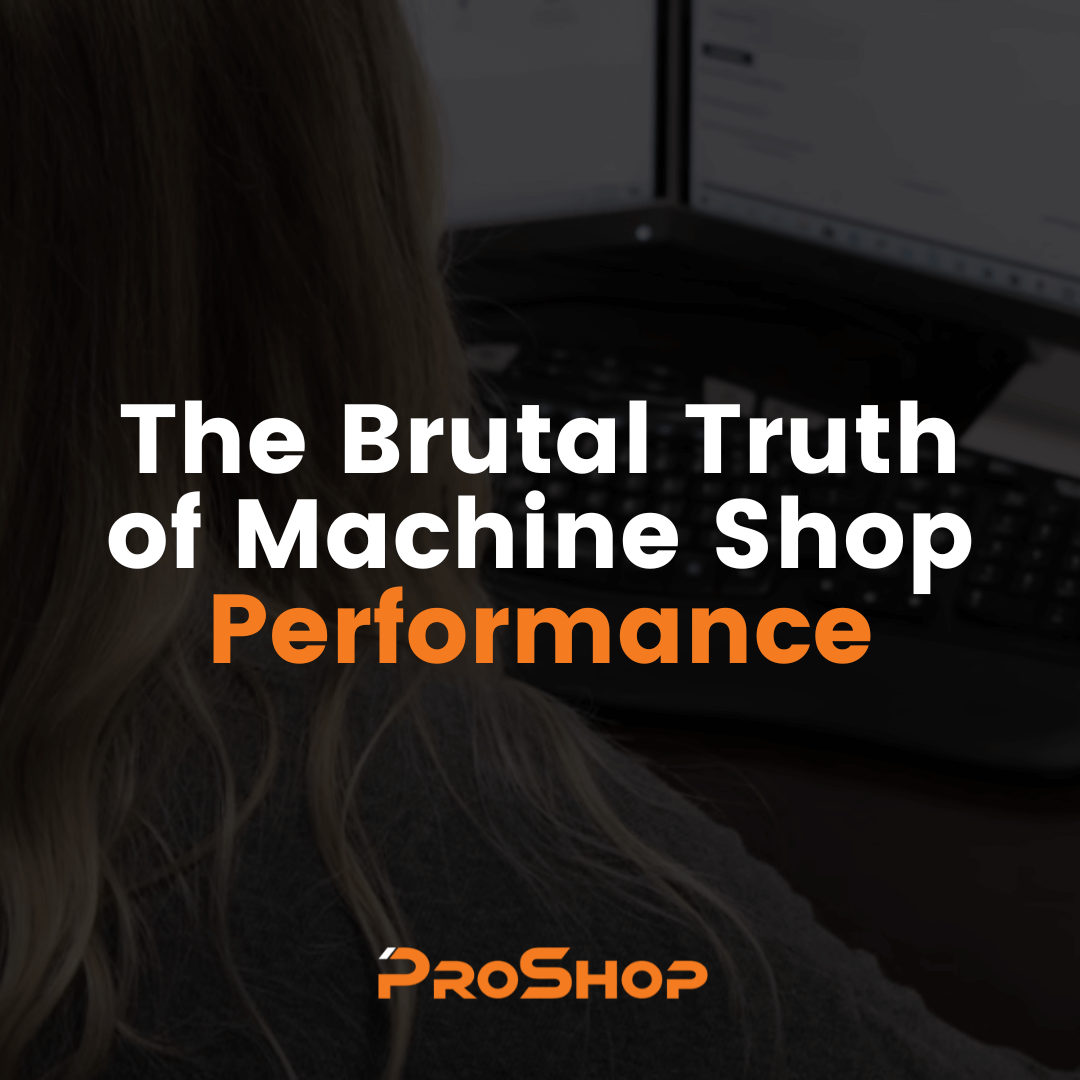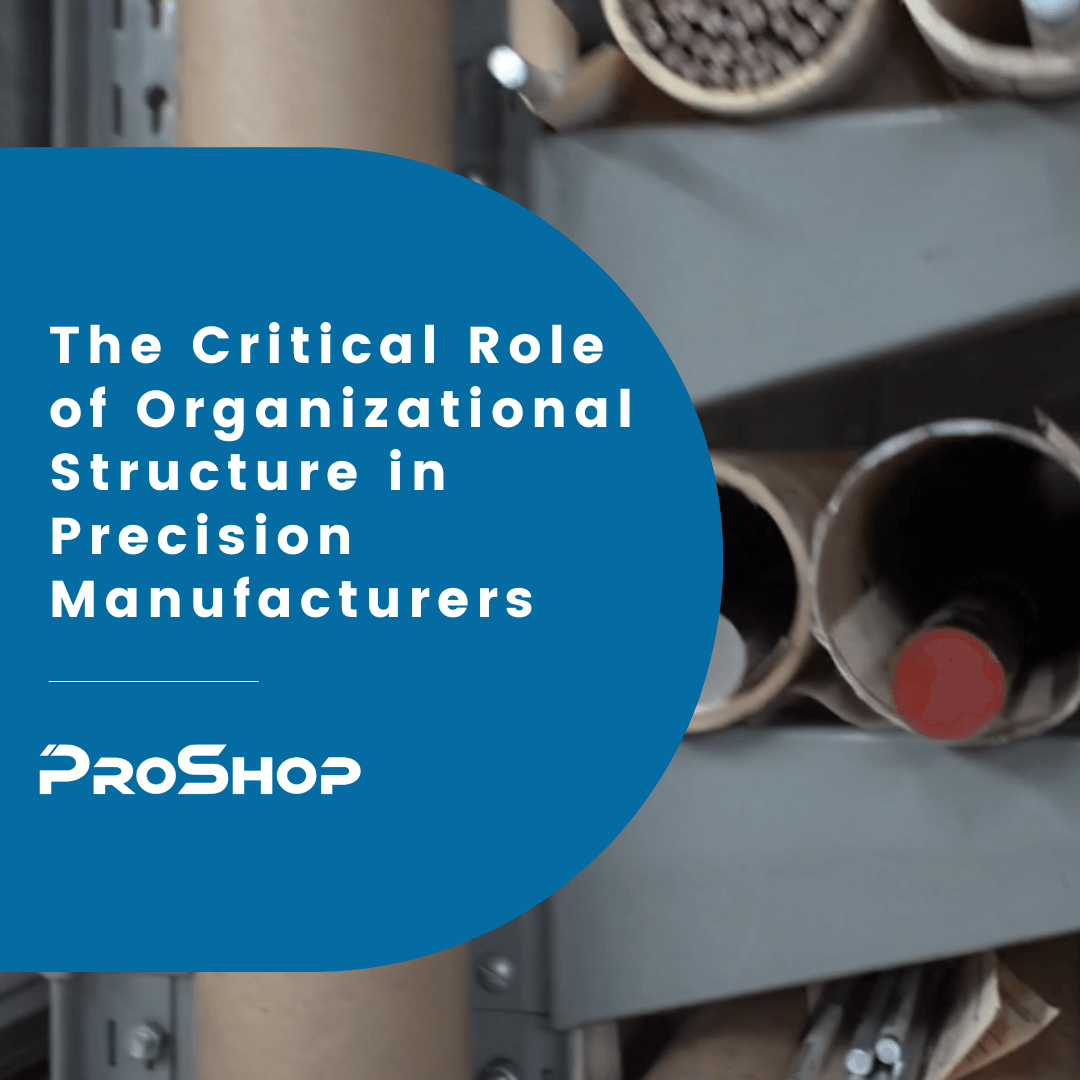Process
& Scheduling
Management
Maintenance
Management
& Inspection
& Material Planning
Financial Data
Management
A friend of ours, and ProShop customer Joanna Boatwright recently sent us an excerpt of a paper she wrote for a Change Management class. In the paper, she outlines how a fictitious company – Parker Manufacturing, can evolve itself from a traditional organization to a learning organization. We’ve had many clients choose ProShop because of the ability to capture their company’s intellectual property, leverage and grow it. There are some great takeaways and advice. How well does your organization align with these best practices?
Joanna describes how ProShop would be used in that process in the section about Systems:
Leadership – Parker Manufacturing’s Leadership team will be the sustaining force in maintaining the change. They will use their expertise to strategize ways to keep the momentum going within the learning environment that has now been created. In addition, Leadership will coach and mentor individuals, teams, and departments to keep the new systems in alignment and working well together. They will also guide the company as it responds to internal and external changes, preserving the focus of the company on the vision, casting aside frivolous distractions. Ultimately, the leadership team will begin to develop and teach those under them to be the next set of leaders for Parker Manufacturing.
Strategy – Parker Manufacturing has positioned itself as a variety-based company, providing a limited variety of products to a large variety of customers. In order to maintain the competitive edge, Parker will rely on the new learning organizational structure to make good use of all employee knowledge for changes in the market and especially for efficiencies and continuous improvements in operations. All employees have the opportunity to participate in creating Parkers strategic plans, which distinguishes the organization as a creative change maker.
Culture – Parker Manufacturing’s culture will include the attitude of open communication, a willingness to always be open-minded, an encouragement for create thinking and sharing new ideas or conflict, and to support the value of lessons learned from mistakes. Parker will stress the importance of working together toward a common goal, and will be dedicated to recognizing accomplishments to inspire innovation. The organizational structure at Parker will be flat so that communication at all levels is transparent and collaboration is not interrupted by hierarchy. All of these attributes combined will support Parker Manufacturing in successfully facilitating change in the long term, maintaining the competitive edge in the market.
Structure – As noted above, Parker will have a flat organizational structure. This will allow employees to communicate freely, share knowledge in real time and work and problem solve cross-functionally. Due to the company culture that encourages creative thinking, the employees are confident their talents are being used at the highest capacity to support the company’s drive for continuous improvement. Processes and technical systems will be in a state of perpetual motion, meaning they will be modified to suit the ever changing needs of the organization. Interestingly, employee engagement increases as they are part of the process of identifying problems or sharing ideas, then learning new things, making the change happen, and finally reaping the rewards. This flat, integrated structure will make Parker an incredible place to work.
Systems – As part of the change management project, Parker has elected to purchase a new ERP system to replace the antiquated system in use. They have chosen a cloud based system called ProShop by ProShop Canada Inc (ProShop). This system is web based and can be accessed by top management and select employees from anywhere. The most powerful function in ProShop is the Communication systems. Employees communicate within the organization with instant messaging, and intranet email. ProShop also features automated prompts per job title, and authorization prompts. For example, when a job is ready to be issued to the floor, a prompt will automatically be sent to the appropriate employee. In addition, if a customer specification or drawing has changed, once the document has been scanned into the holding tank a prompt will be sent to the document control person for approval and distribution. The communication systems go further out onto the shop floor. As an operator is setting up a job and discovers a problem or has a new idea, the operator will make a note in the work order which will then be distributed to the appropriate person to either help with the problem or charge the implementation of the improvement. This is also a helpful feature as Parker moves toward eliminating tribal knowledge. Parker can encourage all operators to make notes and upload photos or videos into the manufacturing order so all operators can have access to their tricks and tips for each job.
Another powerful function of ProShop is its ability to capture data in real time. For example, Work-in-Process. Parker can see the schedule as it is happening and as its forecast. This is helpful in determining not only workforce needs, but also capacity. ProShop tracks individual machines including the minutes allocated to each operation needed to complete a product as it travels the shop floor. When changes are needed due to a hot job or a delay with parts out to processing, Management can easily visualize how to fit the change into the schedule with little to no disruption to Work-in-Process. Cost of goods is also calculated in real time. As material is purchased and entered into the system, as details are issued to assemblies, and finally as time accounted for manpower, Parker can easily see if the company is on track, if there is a problem or need for additional mentoring or training.
Inventory of all products are controlled in ProShop as well. Each part that comes off the shop floor is accounted for as it goes out the door or is put on the shelf for later sale. All commercial off the shelf (COTS) items are also controlled, along with tooling and material. Any item, from a rivet to a complex assembly, is tracked in ProShop. Items or tools that will be issued to a job in process are accurately accounted for. When an item or tool is out of stock or getting close, the system will send a prompt to purchasing for ordering, so the job is never waiting.
Another impressive feature of ProShop is the Quality System. Both ISO 9001 and AS9100 standards are embedded into this system. Meaning, documents are controlled and records are kept automatically to accommodate the requirements of each standard. In addition, Internal Auditing and Process Improvement modules support Parkers goal of continuous improvement. As opportunities for improvement are discovered, ProShop tracks and notifies all interested parties of changes. If training is needed related to these changes, the Training Module sends prompts out to those affected by the update and training can either be completed individually or is scheduled for a group.
Lastly, to support the flat structure of the organization an instant messaging tool is available for all employees with a computer to encourage open communication at all levels. Parker wants everyone to share new ideas and support each other in developing a creative work environment.


